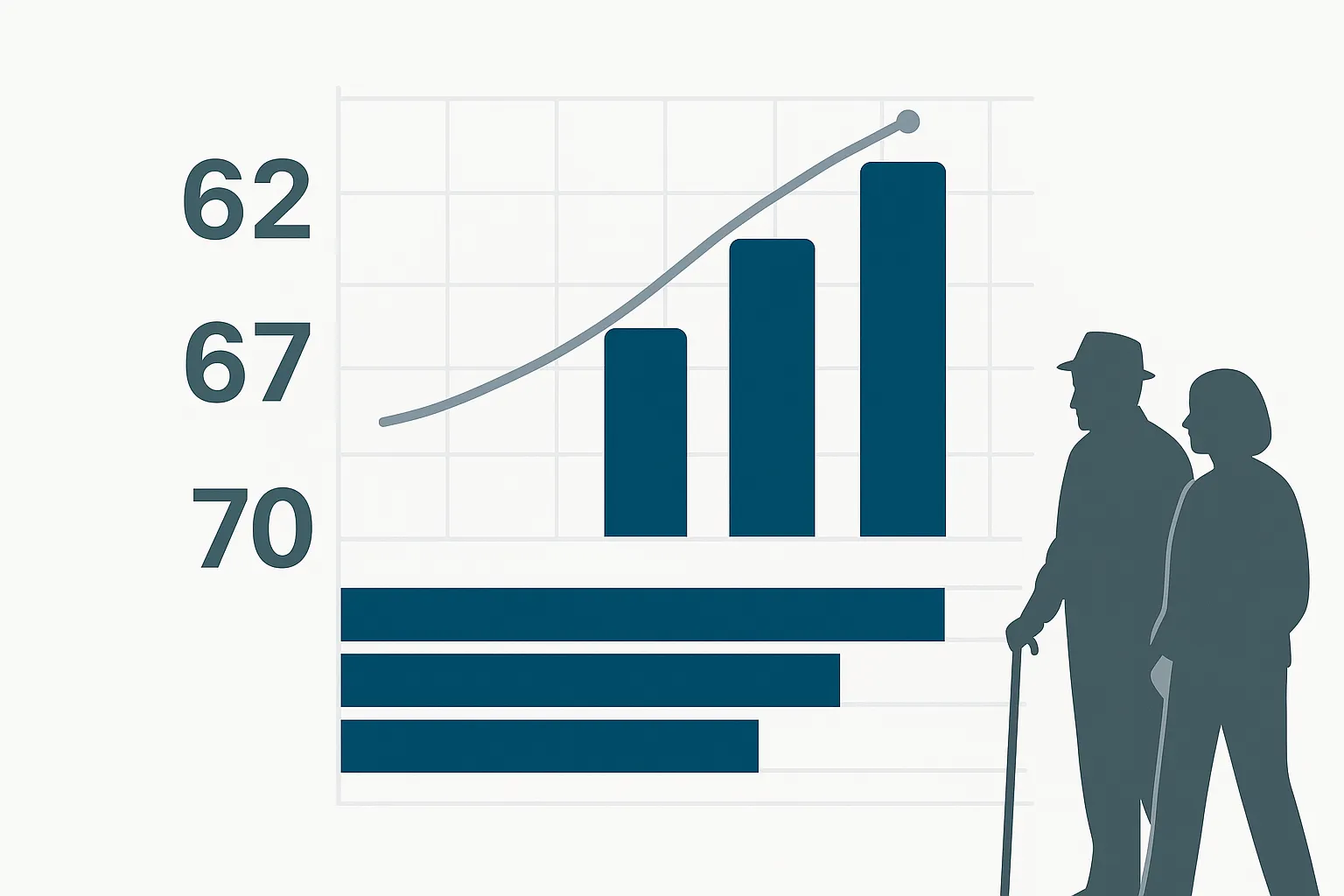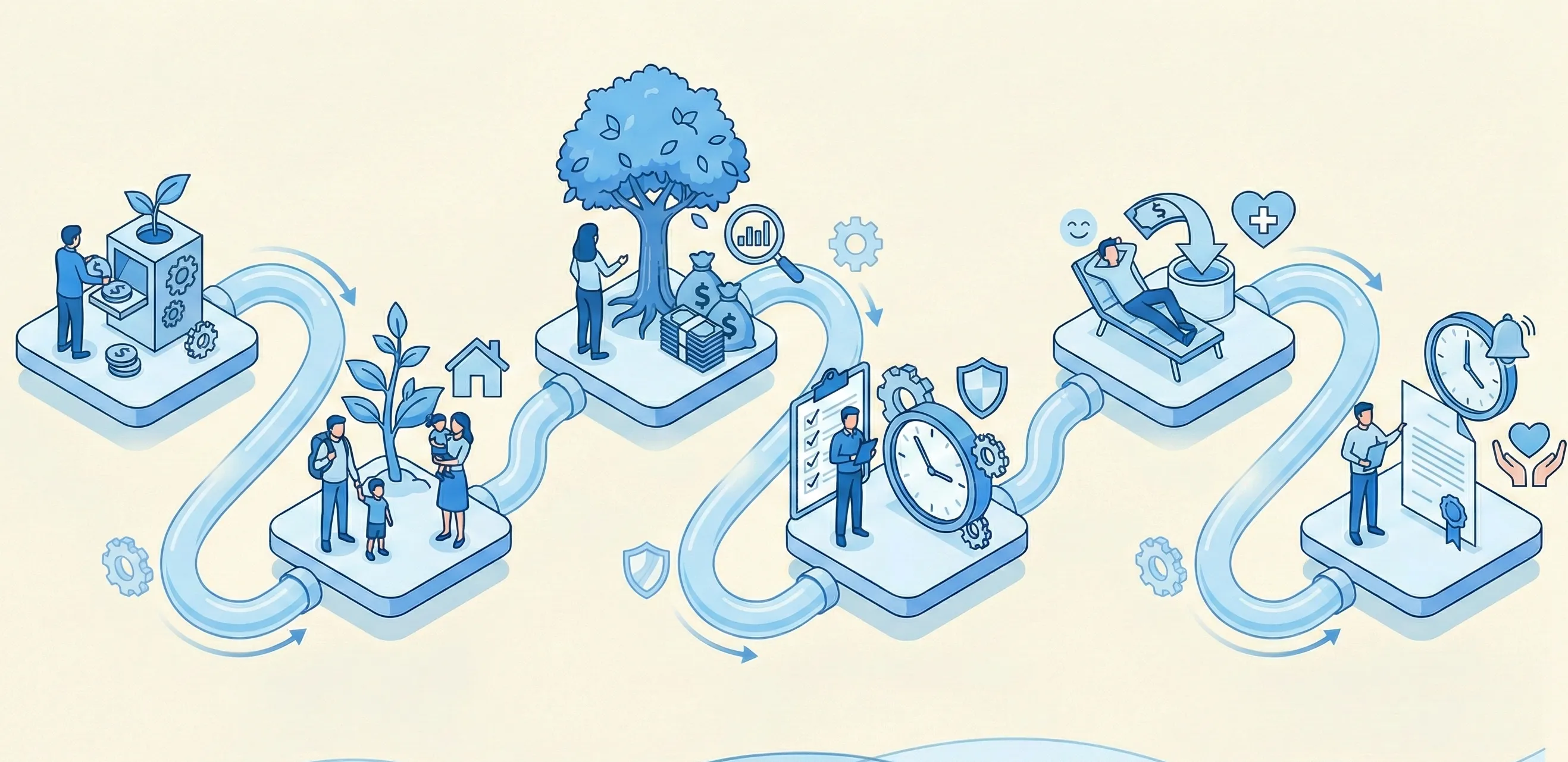Social Security Optimization - Tool

What Actually Drives the Decision
- The monthly benefit curve. SSA’s rules increase or decrease benefits relative to the Primary Insurance Amount (PIA). Early filing cuts the check; filing after FRA grows it monthly until 70 via delayed retirement credits. For those born 1943+, credits accrue at ~2/3 of 1% per month (≈8%/yr) to age 70. (SSA.)
- Spousal and survivor benefits. A spouse may be eligible for up to 50% of the worker’s PIA at their FRA; survivor benefits follow different, often higher, rules. Coordinating who files when can change household lifetime benefits materially. (SSA.)
- Earnings test before FRA. For those working and claiming before FRA, the SSA withholds benefits above annual limits ($1 for $2, then $1 for $3 in the year of reaching FRA). After FRA, the test no longer applies, and benefits are recalculated. (SSA.)
- Policy backdrop. Headlines about trust-fund depletion can push people to file early. The 2024 Trustees Report project reduced payable benefits after 2035 without legislative action, but the program continues to pay the majority of scheduled amounts. Optimization is still a lifetime cash-flow question, not just a monthly fear response. (SSA Trustees.)
So what? Claiming age is a long-term decision affected by longevity, household eligibility, taxes, and employment - not a reflex to a single number on a statement.
How the Social Security Optimization Tool Works
Inputs it considers (the levers):
- Age today and planned retirement age (sets the time horizon).
- Estimated monthly benefit at FRA (from the SSA statement).
- Marital status and spouse benefit (enables spousal/survivor coordination).
- Expected lifespan (single value or range).
- Other retirement income (pensions, withdrawals, wages).
- Federal/state tax rates (to estimate after-tax income).
Outputs it delivers (what most people actually want):
- Hypothetical lifetime benefit comparison for claiming at 62, 67, or 70.
- Estimate the Break-even age where waiting overtakes filing early.
- Estimated after-tax income impact, including the share of benefits exposed to income tax.
- A plain-English strategy label: “Claim early,” “Wait until full retirement,” or “Delay until 70” - framed as an educational estimate, not individualized advice.
How to Use the Tool for Real Decisions
- Run three baselines - claim at 62, 67, 70 - using SSA’s FRA chart for your birth year to validate the inputs.
- Toggle a longer lifespan to see how sensitive the break-even is to living into the 80s or 90s.
- Model part-time work before FRA to reveal any earnings-test withholding and its later adjustment.
- Layer taxes using current estimates; if other income drops later, the share of Social Security subject to tax may decline. (IRS Pub. 915.)
Want to pressure-test the result against your broader plan? Many investors try PortfolioPilot.com’s free analysis tools to see how claiming age interacts with withdrawals and taxes across the full portfolio.
This interactive tool is for illustrative purposes only and does not represent any actual or future social security benefit payments and is not a guarantee. The chart may not reflect an accurate depiction of lifetime benefits if an individual's assumptions and inputs, including but not limited to their life expectancy, are not accurate.
PortfolioPilot is not affiliated with, endorsed by, or approved by the Social Security Administration (SSA) or the Internal Revenue Service (IRS). References to their materials are provided solely for educational context.
How optimized is your portfolio?
PortfolioPilot is used by over 40,000 individuals in the US & Canada to analyze their portfolios of over $30 billion1. Discover your portfolio score now:






